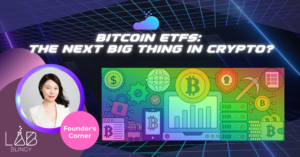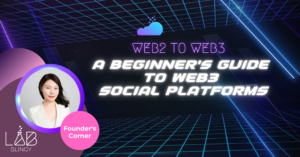Metaverse projects like Decentraland and Sandbox have a reputation for bringing real ownership to digital land or User-generated content (UGC) in the form of tokens securely stored on the Ethereum Blockchain. This way, users have been able to transcend a centralized interaction system.
Among all the other Metaverse projects in the Web3 market, these two projects have benefited more from the metaverse hype. The two Metaverse companies have found themselves under the spotlight with growing concerns about which is better and well-suited for web3 aficionados.
To get an insight into which of Decentraland and Sandbox is better, I have elicited all the facts you need to know about these two projects and detailed comparisons.
What is Decentraland?
Decentraland is an entirely vivid 3D Blockchain-based metaverse where players can buy plots of land and invest in the virtual universe.
Brought into the limelight in 2017 as the earliest pioneer in the metaverse sphere, Decentraland gives its players a broad scope of encounters, including casino concerts, galleries, games, and considerably more.
Besides digital home and property ownership, Decentraland users can build or create with MANA tokens. MANA is an ERC-20 standard or Ethereum cryptocurrency used as a native token in this virtual real estate platform.
Users can use the MANA token to buy LAND parcels – a digital real estate virtual land that complies with the ERC-721 standards and can serve as NFTs.
Further use of Decentraland’s MANA coin is for the platform’s payment of avatars, costumes, and domain names.
The platform is made especially for businesses, content creators, and individuals interested in digital art as a source of entertainment or for developing business opportunities.
What is Sandbox?
Sandbox is a play-to-earn 3D virtual world in the Metaverse. This platform started as a mobile game in 2011 but migrated to a 3D gaming sphere in 2017. This transformation allows clients to build, play, purchase land, exercise ownership, and monetize their virtual experiences.
Sandbox offers a more gamified experience incorporating missions, games, and difficulties to procure rewards dissimilar to Decentraland.
The Sandbox ecosystem uses the SAND token, an ERC-20-supported token that facilitates the platform’s transactions and interactions, like playing games, avatar customization, or purchases. SAND tokens are used to participate in governance and ownership when users purchase virtual lands, also known as LAND tokens in Sandbox. LANDS can be staked or betted to acquire more SAND on the Sandbox platform.
Sandbox is changing the trajectory between creators, gamers, and gaming platforms by focusing on user-generated content. This platform has created a new gaming market in which players own the products of their creative labor and are rewarded for the value they bring to developers and operators.
There are similarities between these two projects and some essential contrasts. To help you understand better about these projects, I’ve highlighted their differences and similarities.
Differences between Sandbox and Decentraland

Purpose
Decentraland is a virtual world that aims to be a realistic representation of the actual world and offers users the chance to interact socially, do business, and have fun. Sandbox, on the other hand, is chiefly concerned with creating a user-owned and user-generated gaming ecosystem.
Decentraland, on the other hand, has shown more practicability and purpose through introducing proof of concept into its platform, whereas Sandbox is still in the Alpha mode.
Wallet Compatibility
The two projects support using any ERC-20 wallet in their marketplaces, but they are also making moves to advance to more improved options.
Decentraland recently bridged the platform with Walletconnect, allowing polygon users to engage in Decentraland.
Sandbox plans to adopt and implement the ERC-1155 standard in its games. This would make Sandbox compatible with additional tokens, paving the way for the integration of diverse NFTs available in-game.
Decentralization
This factor is the most appealing aspect that gives Decentraland fanatics huge bragging rights over the Sandbox platform. While Sandbox maintains a central controlling entity, Decentraland is currently fully decentralized with a governing DAO, making it a clear winner in this context.
Land Availability
Decentraland has a limited supply of 90,601 plots of land that users can purchase only on Decentraland’s marketplace. In contrast, Sandbox has a broader collection of 166,464 plots of land that can be bought on both Sandbox’s marketplace and Opensea.
Tokenomics
Decentraland supports using the MANA tokens as its distinct token and other tokens like; LAND and WEAR. The sandbox allows users to interact with their SAND, GAMES, LAND, and ASSETS in the Metaverse.
Making Purchases
Sandbox offers a better option for users to purchase assets by leveraging the Opensea marketplace, granting easy access for non-community members to use. On the contrary, Decentraland allows the purchase of their assets from the MANA marketplace only.
Collaborations
The two projects have a fair share of associations with big brands, which also espouses their credibility. Decentraland has entered into collaborations with Atari, Cyberpunk, and Polygon; on the other hand, Sandbox is collaborating with more than 165 brands like; Opensea, Cryptokitties, Walking dead brand, and Snoop Dogg, among others.
Platform Accessibility
Decentraland presents limited access points to the platform by allowing access only through connecting a wallet. However, Sandbox provides a wider range of options for getting into the platform, such as through email, social media accounts, and a Metamask wallet.
In this context, the Sandbox has an edge and stands out as the preferred choice.
Graphic Editor
Decentraland uses The Builder as a simple visual editor tool that lets users create content. Sandbox, on the other hand, has a powerful VoxEdit graphic editor used to create a variety of voxel assets that are used in-game and sold in the Sandbox marketplace.
Similarities between Decentraland and Sandbox
-
Metaverse Positioning
-
Virtual Land and Real estate oriented
-
Both allow User-Generated Content
-
Both are used for the monetization of in-world assets.
The Bottom Line
Both of these metaverse projects spark intriguing and enjoyable experiences, and at the same time, both have their upsides and downsides. They both have a long way to go in transitioning into a larger decentralized metaverse.
To answer the question, “Which one is better?” It comes down to personal preferences and subjective investment decisions. Do you prefer an older, established, and more secure project in Decentraland or a newer and trendier project immersed in creating more excitement and rewards in Sandbox?
I would say, “If you like to speculate, the Sandbox is a better option because the possible returns are bigger. Plus, I believe the Sandbox has more untapped potential than crowded Decentraland.” But if you are still new to the Metaverse, I suggest you try both to discover which works best.
What are your thoughts? Which of these Metaverse projects interest you?
Follow my Twitter @JoyyuanWeb3 to learn about the trends of Blockchain, Crypto, and Web3!








